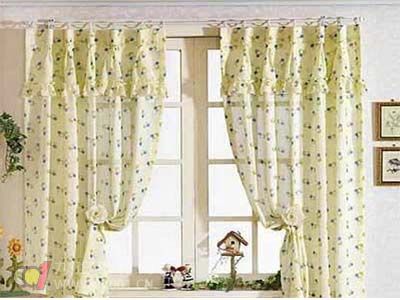The principle of color matching for home decoration curtains:
A home is a warm and welcoming space, and creating an eco-friendly, aesthetically pleasing environment is a common goal for everyone. Color plays a key role in shaping the atmosphere of your living space.
First, it's best to use light colors on the top part of the room. Light shades create a sense of openness, while dark tones can make the space feel heavier. Typically, rooms are designed from top to bottom, starting with lighter colors on the ceiling and walls, then transitioning to slightly darker tones on the wall trim, and finally using darker shades on the baseboards. This approach gives a feeling of lightness combined with stability.

Second, choose colors based on the direction the room faces. East-facing rooms receive sunlight early in the day and lose it quickly, making them appear darker earlier. Using light, warm tones can help brighten the space. South-facing rooms get the most sunlight, so cool colors are ideal for a more comfortable feel. West-facing rooms are exposed to intense afternoon sun, so cool colors work best to reduce heat. North-facing rooms don't get direct sunlight, so warm and light colors are recommended to add brightness and warmth.
Third, consider the purpose of each room when selecting colors. The function of the space influences the mood you want to create. Living rooms should be bright, relaxed, and cozy, while dining areas can have deeper, more intimate tones. Kitchens are best suited for light colors, but warm tones should be used carefully. Hallways and entryways, which are mainly for passage, offer more flexibility in color choices. Bedrooms, on the other hand, should reflect personal taste and comfort.
Fourth, the shape of the room can also influence color choices. Colors can subtly change how a space feels. For example, cool colors can make a low ceiling seem higher, while they can also make narrow rooms appear wider. Darker colors on the far wall can give the illusion that the wall is closer, adding depth to the room.
-
Excellent Sound Absorption: These panels effectively reduce echo and reverberation, creating a more comfortable and acoustically balanced environment, suitable for offices, studios, theaters, and homes.
-
Customizable Design: Available in various colors, finishes, patterns, and textures, they can be tailored to match different interior styles and design preferences.
-
Durability: Made from medium-density fiberboard (MDF), the panels are robust and long-lasting, resisting wear and tear over time.
-
Eco-Friendly: Many MDF panels are made from recycled wood fibers, contributing to sustainable building practices and reducing environmental impact.
-
Easy Installation: With user-friendly mounting systems, these panels can be installed with minimal effort, whether for walls or ceilings.
-
Versatile Applications: They are suitable for a wide range of environments, from residential to commercial spaces, offering both functional and decorative benefits.
-
Fire and Moisture Resistance: Depending on the treatment, some MDF acoustic panels also provide enhanced resistance to fire and moisture, ensuring safety and durability in different settings.
These features make MDF acoustic panels a practical and stylish solution for anyone looking to improve acoustics without compromising on design.
acoustic wood panels,acoustic wood wall panels,acoustic panel manufacturers​,acoustic panel,acoustic board panels
Linyi Dongtai Decoration Materials Co., Ltd , https://www.dongtaiwood.com